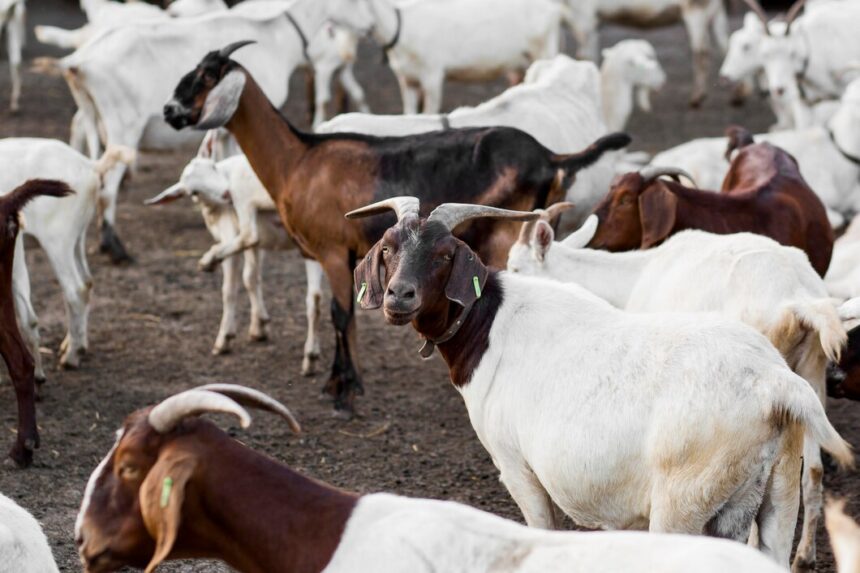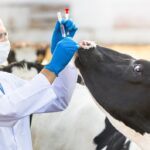Running a profitable goat farm in South Africa requires careful planning, strategic management, and a keen understanding of the market. This article provides a comprehensive guide to achieving profitability in goat farming by focusing on various critical elements, including revenue streams, cost management, risk mitigation, strategic planning, and financial oversight.
Revenue
Goat farming can generate revenue from multiple sources:
- Meat Sales: The primary income from goat farming is from selling goat meat, which is in high demand in many communities.
- Milk Production: Goat milk and related products such as cheese, yogurt, and butter can be lucrative.
- Breeding Stock: Selling high-quality breeding goats can provide substantial income.
- Fiber Production: Some breeds, like Angora and Cashmere goats, produce valuable fiber.
- By-products: Manure and other by-products can be sold as organic fertilizers.
Costs
Understanding and controlling costs is vital for profitability:
- Fixed Costs: These include land, housing, fencing, machinery, and equipment.
- Variable Costs: Feed, veterinary services, labor, utilities, and transportation.
- Maintenance Costs: Regular upkeep of equipment and infrastructure.
Cost Management Tips:
- Bulk Purchasing: Buy feed and supplies in bulk to take advantage of discounts.
- Preventive Healthcare: Regular veterinary checks to prevent costly disease outbreaks.
- Energy Efficiency: Implement energy-efficient systems to reduce utility costs.
Risks
Goat farming faces several risks, including disease, market fluctuations, and adverse weather. Mitigate these risks by:
- Diversification: Diversify goat breeds to spread risk.
- Insurance: Invest in comprehensive insurance coverage for livestock and farm operations.
- Biosecurity Measures: Implement strict biosecurity protocols to prevent disease outbreaks.
Strategy
A clear strategy helps align farm operations with long-term goals:
- Market Research: Understand market demand and consumer trends to guide production decisions.
- Sustainable Practices: Adopt sustainable farming practices to ensure long-term viability.
- Quality Assurance: Focus on high-quality goats to build a strong reputation and customer loyalty.
Efficiency
Operational efficiency can significantly boost productivity and reduce costs:
- Modern Equipment: Invest in modern farming equipment to enhance productivity and reduce labor costs.
- Automated Systems: Use automated feeding and watering systems to improve efficiency.
- Labor Management: Train workers in best practices and efficient farm management.
Productivity
High productivity is essential for profitability:
- Breeding Programs: Implement effective breeding programs to enhance goat quality and productivity.
- Optimal Feeding: Use balanced and nutritious feed to ensure healthy and productive goats.
- Health Management: Regular health check-ups and vaccinations to maintain herd health.
Market
Understanding the market dynamics is crucial:
- Market Analysis: Regularly analyze market trends, demand, and prices.
- Branding: Develop a strong brand identity to differentiate your products in the market.
- Export Opportunities: Explore export markets to access higher-paying international customers.
Financial Management
Effective financial management ensures sustainability and growth:
- Budgeting: Create and adhere to a detailed budget to manage expenses and revenues.
- Record Keeping: Maintain accurate financial records to track income, expenses, and profitability.
- Cost-Benefit Analysis: Regularly perform cost-benefit analyses to evaluate the profitability of various operations.
Growth
To ensure long-term growth, focus on expansion and diversification:
- Increase Herd Size: Gradually increase goat numbers to boost production.
- New Markets: Explore new markets and diversify product offerings.
- Value Addition: Consider processing and selling value-added products like packaged meat or dairy products.
Investment
Investment in infrastructure, technology, and human resources is vital:
- Infrastructure: Develop adequate housing, feeding, and waste management facilities.
- Technology: Invest in modern technology for efficient farm management.
- Training: Provide continuous training for workers to improve productivity and efficiency.
Funding
Access to adequate funding is crucial:
- Government Grants: Explore government grants and subsidies available for goat farmers.
- Bank Loans: Secure bank loans for large investments in infrastructure and livestock.
- Private Investors: Attract private investors by showcasing the farm’s profitability and growth potential.
Strategic Planning
Strategic planning involves setting long-term goals and devising plans to achieve them:
- Vision and Mission: Define a clear vision and mission for the farm.
- SWOT Analysis: Conduct a SWOT analysis to understand strengths, weaknesses, opportunities, and threats.
- Action Plan: Develop a detailed action plan with timelines and milestones to achieve strategic goals.
By focusing on these aspects, goat farmers in South Africa can navigate the complexities of the industry and achieve sustained profitability. Effective management, strategic planning, and continuous improvement are key to running a successful goat farm.
Join 'Farmers Mag' WhatsApp Channel
Get the latest Farming news and tips delivered straight to your WhatsApp
CLICK HERE TO JOIN






